
We're an all volunteer website and need your help to keep going. Here are five ways you can contribute: 1 Donate 2 Buy something 3 Submit a story 4 Volunteer 5 Advertise

New in the gift shop, virtualitalia.com logo wear and use items! 
|
PLEASE NOTE: We are experiencing unexpected
technical difficulties caused by our web host. We apologize for
the inconvenience. During your visit you may experience service
and page interruptions - we are in the process of fixing everything and hope to be
fully back on our feet soon.
chicago's italians
As in most older American cities, ethnic identities have persisted well beyond the melting pot, and a sophisticated understanding of the economic, social, political, and cultural dynamics of the city is impossible without careful consideration of ethnic factors. Being part of the complex interaction of ethnic groups and consistently outnumbered by Irish, Poles, African-Americans, and Hispanics, Italian aspirations for power and prestige have often been thwarted. Typical chain migration patterns prevailed, with families and villages gradually reforming in Chicago neighborhoods as workers accumulated savings to send for their relatives. Throughout the early-twentieth century a good deal of residential mobility continued among the Italians. Nevertheless their major colonies, as first enumerated by Rudolph Vecoli, were shaped as follows. The original Genoese/Lucchese neighborhood in the shadow of today's Merchandise Mart produced the first Italian Catholic Church of the Assumption in 1880. Toward the south end of the Loop near the Polk Street Station, the Riciglianese (Salerno) lived. Over the years the colony moved south into what is now known as Chinatown, where they were joined by the Sicilians from Nicosia. The Scalabrinian church of Santa Maria Incoronata (patroness of Ricigliano) remained the focal center for the community until the 1980s, when it became the Chinese mission of St. Therese. On the near West Side, in a neighborhood made famous by Jane Addams and Hull House, the largest Italian colony grew up. This Taylor Street area contained about one-third of the city's Italians � a mixture of people from Naples, Salerno, Basilicata, the Marche, and Lucca. The neighborhood was also shared with Russian Jews to the south and Greeks to the north.
Most originated from the small towns surrounding Palermo. The Servite Church of St. Philip Benizi provided the backdrop for a score of festivals each summer sponsored by paesani-based mutual benefit societies. (Paesan is from paese, meaning fellow countryman or townsman.) In addition to the major inner-city Italian enclaves, a number of outlying and suburban colonies formed in the pre-1920 period. In the 1890s a settlement of Toscani who worked at the McCormick Reaper plant appeared a few miles to the southwest of the Loop at 24th and Oakley. Also to the south, in the famous planned company town established by George Pullman, there was a colony of Italian brickmakers from Altopiano Asiago. The nearby Roseland neighborhood was also home to a contingent of Piedmontese and Sicilians. The town of Blue Island at the southwest border of the city was heavily settled by railroad laborers from Rippacandida (Basilicata). Chicago Heights, thirty miles to the south of the Loop, had a population that was 50 percent Italian by 1920, with most hailing from San Benedetto del Tronto (Marche), Caccamo (Sicily), Amaseno (Lazio), and Castel di Sangro (Abruzzo). Melrose Park, sixteen miles to the west of the central city, was a place of second settlement, attracting Italians from the inner city to the wide-open spaces of the suburbs. The establishment of a major religious feast of Our Lady of Mount Carmel eventually identified the town as the quintessential Chicago Italian suburb. The Highwood community, twenty-eight miles north of the city, developed after the turn of the century when migrants from Modenese towns moved here from Illinois coal towns. Mostly contadini (small farmers) from dozens of towns in Italy both north and south settled around the core of the central city and in selected suburbs. They practiced campanilismo (allegiance to their town of origin), living near others from the same village or region. The core colonies were considered slums, their inhabitants the object of intensive efforts by social workers to make them middle class and masterful maneuvers by political ward bosses to get their votes.
The Italian communities of Chicago were enriched by a phenomenon all too rare in their towns of origin � voluntary associations. By the 1920s in addition to the paesani-based mutual benefit societies, the Italians in Chicago had church and school-oriented clubs and sodalities that worked at fundraising, as well as special-interest organizations sponsored by the settlement houses. According to historian Humbert Nelli, the general prosperity had nearly completed the Italians' social mobility by 1929. No treatment of Chicago's Italians would be complete without some discussion of the city's most famous Italian American � Al Capone. The image of this gangster, who operated a vice, gambling, and illegal liquor empire for twenty years under the bribed consent of the city's non-Italian political leadership, has besmirched the name not only of Italians in Chicago but of the city itself. A showoff, Capone fancied himself a modern Robin Hood, passing out cash at social functions and establishing soup kitchens for the destitute. Though the numbers directly involved in syndicate crime were less than 1 percent of the Italian American people, the Capone mob captured the imagination of journalists and moviemakers who helped create a negative stereotype that continues to haunt people with Italian names a half century after Capone's death. On the whole, public opinion of the Italian immigrant in the 1920s was a negative one. Poverty, ignorance, blackhand crime, and prohibition-related violence were the chief ingredients in the public image of Italians. Even the most sympathetic saw Italians in the city as suitable objects for social work, charity, and rehabilitation � perhaps a more negative image than the criminal stereotype.
Roughly speaking, what might be called the second generation emerged in the 1920s through the 1940s. Born in Chicago, educated according to American and/or Catholic standards, influenced by the Prohibition of the 1920s, tempered by the Great Depression, and tested by service in World War II, this group was often ambivalent about ethnicity. Though they had experienced the joys of Italian family life, middle-class America had always frowned on their parents' language and customs, and now came the War ... ...to be continued! Related Items: |
© 1998-2005 by virtualitalia.com unless otherwise noted
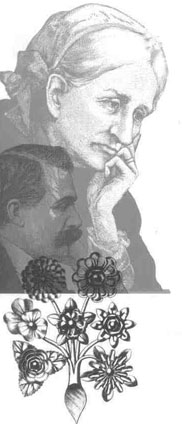 Italians have been in Chicago since the 1850s. Until 1880 the community consisted of a handful of enterprising Genoese fruit sellers, restaurateurs, and merchants, along with a sprinkling of plaster workers. Most Chicago Italians, however, trace their ancestry to the wave of unskilled southern immigrants who came to the United States between 1880 and 1914. As a rail center, an industrial center, and American's fastest growing major city, Chicago offered opportunities for immigrants from all nations. In the nineteenth century it was a mecca for German and Irish migration. In the early-twentieth century Italians, Russian Jews, and, most important, Poles found a place in Chicago. Later, blacks from America's South, and Mexican and Asian immigrants came to the city, making it today home to sizable colonies of more than eighty different nationalities. Chicago's black population is second only to that of New York City; at one time or another it has been the largest Lithuanian city, the second largest Bohemian city, the second largest Ukrainian city, and the third largest Swedish, Irish, Polish, and Jewish city in the world!
Italians have been in Chicago since the 1850s. Until 1880 the community consisted of a handful of enterprising Genoese fruit sellers, restaurateurs, and merchants, along with a sprinkling of plaster workers. Most Chicago Italians, however, trace their ancestry to the wave of unskilled southern immigrants who came to the United States between 1880 and 1914. As a rail center, an industrial center, and American's fastest growing major city, Chicago offered opportunities for immigrants from all nations. In the nineteenth century it was a mecca for German and Irish migration. In the early-twentieth century Italians, Russian Jews, and, most important, Poles found a place in Chicago. Later, blacks from America's South, and Mexican and Asian immigrants came to the city, making it today home to sizable colonies of more than eighty different nationalities. Chicago's black population is second only to that of New York City; at one time or another it has been the largest Lithuanian city, the second largest Bohemian city, the second largest Ukrainian city, and the third largest Swedish, Irish, Polish, and Jewish city in the world!
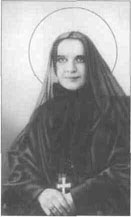
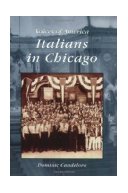
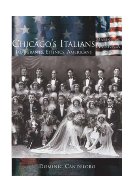
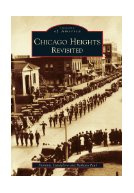
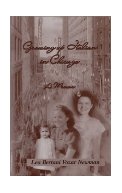
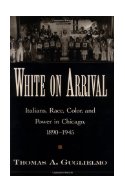
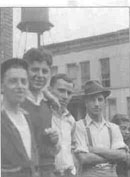 The immigrants worked as railroad laborers, construction workers, small-scale fruit and vegetable peddlers, shoe makers, and barbers. Both men and women were engaged in the needle trades, and Italian Socialists were among the leaders in several Chicago strikes by the Amalgamated Clothing Workers Union. In the pre-World War I period, it was unusual to find Italians employed in factories. Only a minuscule number worked in meatpacking plants.
The immigrants worked as railroad laborers, construction workers, small-scale fruit and vegetable peddlers, shoe makers, and barbers. Both men and women were engaged in the needle trades, and Italian Socialists were among the leaders in several Chicago strikes by the Amalgamated Clothing Workers Union. In the pre-World War I period, it was unusual to find Italians employed in factories. Only a minuscule number worked in meatpacking plants.
 In the mid-1920s Italians in Chicago still maintained their Italianess. Their language, their family patterns, and their religious practices were retained in their old neighborhoods even while they were Americanized by their daily contacts with non-Italians (mostly immigrants themselves). Mussolini and Fascism reinforced Italianata. In fact, the proudest moment in the history of the Chicago Italian colony came in July 1933 when Italo Balbo's squadron of planes completed its transatlantic flight, landing in Lake Michigan as part of the World's Fair activities. The event and the activities surrounding it put Italians on the front page � in a positive light for a change. Until the declaration of war between the United States and Italy, support for Mussolini was high. Then things changed, the second generation marched off to war, and vocal support for the Fascist regime died out.
In the mid-1920s Italians in Chicago still maintained their Italianess. Their language, their family patterns, and their religious practices were retained in their old neighborhoods even while they were Americanized by their daily contacts with non-Italians (mostly immigrants themselves). Mussolini and Fascism reinforced Italianata. In fact, the proudest moment in the history of the Chicago Italian colony came in July 1933 when Italo Balbo's squadron of planes completed its transatlantic flight, landing in Lake Michigan as part of the World's Fair activities. The event and the activities surrounding it put Italians on the front page � in a positive light for a change. Until the declaration of war between the United States and Italy, support for Mussolini was high. Then things changed, the second generation marched off to war, and vocal support for the Fascist regime died out.